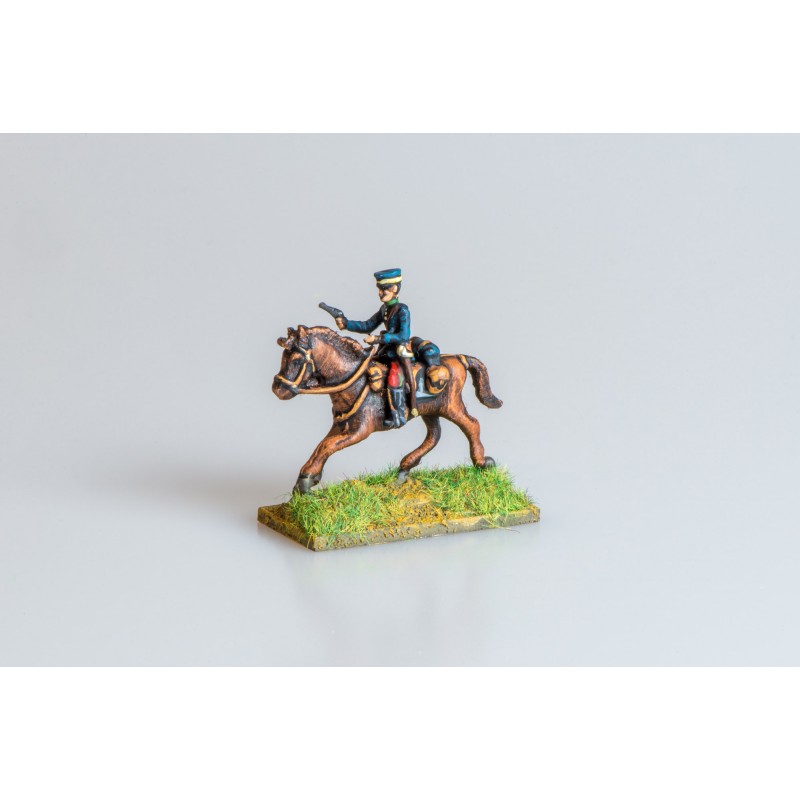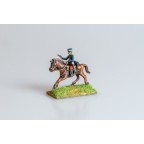This product is sold unpainted.
Additional Images.
1-2. A conversion of an ACW general officer and horse to create a Japanese officer by Kevin Longley. It shows very well what can be done with a little imagination. Very nice indeed.
ON THE JAPANESE
CAVALRY IN 1904
‘On
the Japanese side they acted defensively, and did not go far ahead of the
infantry, as the Japanese were reluctant to risk them against the superior
numbers possessed by the Russians. Also they were at a disadvantage with the Russians,
as they had no horse artillery, and they were badly mounted. Had the Japanese
had larger numbers of cavalry they might, during this period of the campaign,
have been able to turn some of their successes into complete victories.
On
both sides the cavalry acted dismounted for the most part. However, the
Japanese cavalry covered their front and prevented their opponents from seeing
the movements up to the battlefields, but except at the Battle of Telissu, the
action of cavalry was not an important factor in the fighting on either side. On
this occasion the Japanese infantry, who had made a frontal attack, could make
no impression on the Russian position until two Japanese squadrons turned the
enemy’s left flank, and by means of rifle fire, compelled the Russians to
retire. This action uncovered the rest of the force, which fell back through
the defile in rear, suffering heavy loss.
From
this date to the end of the campaign the actual influence of cavalry on the
general actions was unimportant, although west of the railway the open plains
were clear of crops and were admirably suited to the action of the arm.
The
Japanese, being inferior in numbers, were forced to act on the defensive. On
the other side, so great was the lack of enterprise of the Russian cavalry that
they never made an offensive movement of any importance. Thus, during the hard fighting south of
Liao-yang, when practically the whole of the Japanese reserves were absorbed in
the fight, there was abundant scope for an enterprising Russian cavalry
commander. Nothing was done, and a large force of hostile cavalry was contained
by one weak brigade of Japanese cavalry, who lost two men wounded.’
Source. ‘A Study of Strategy
and Tactics of The Russo-Japanese War, 1904’ Lt Col Kearsey DSO OBE psc, The
Naval & Military Press, 2019.




%202-144x144.jpg)
1-144x144.jpg)
%202-800x800.jpg)
1-800x800.jpg)